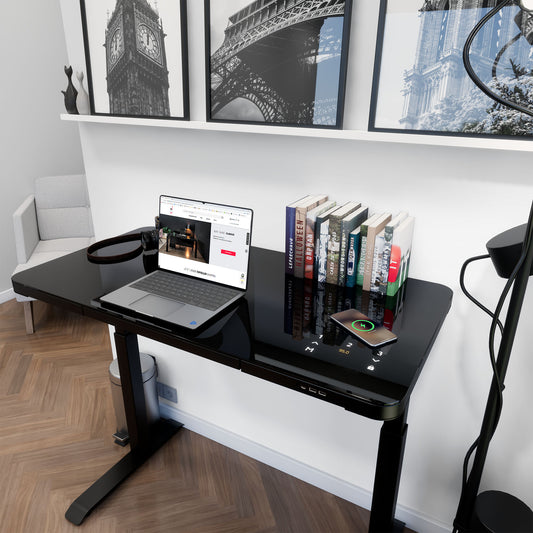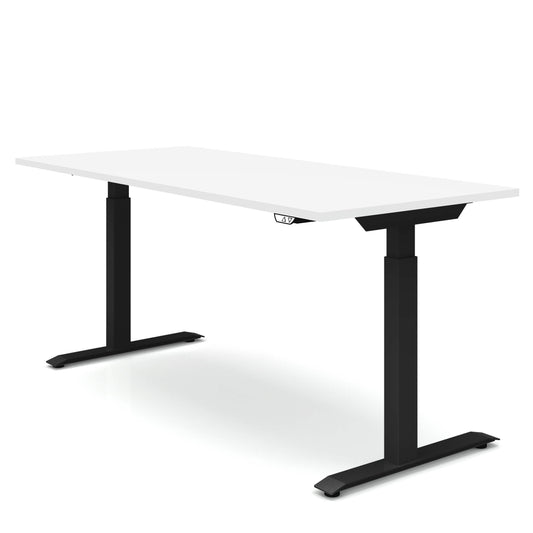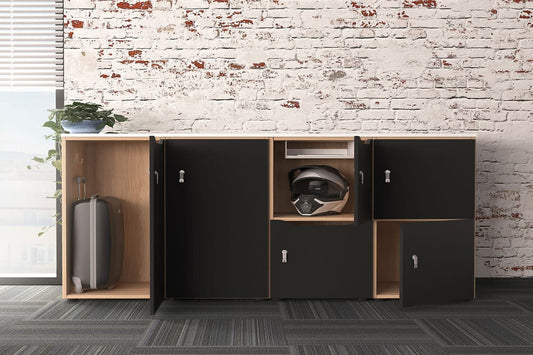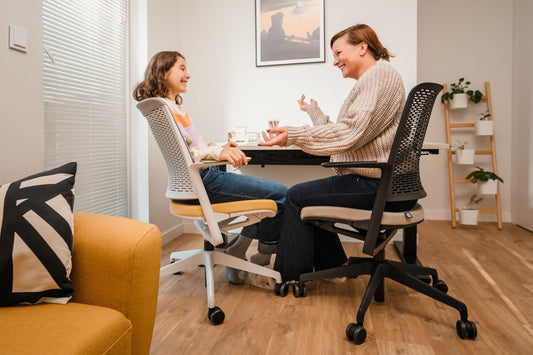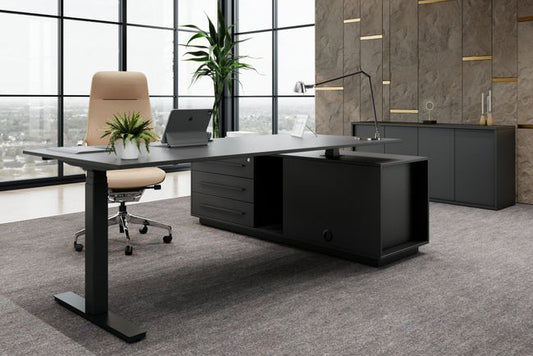Ergonomics and health | Reading time approx. 2 min 🕒
Find the right sitting position: How to set your office chair
On average, we sit about 9 hours a day: in the car, on the train, on the couch and of course - you certainly already suspect it - in the office or home office. Not exactly healthy ... But sitting is of course not right, because while you are relaxed on the couch, this is also ergonomic in the office. So it comes to that correct sitting position to. And you can make this with an optimally set office chair. We'll tell you how.
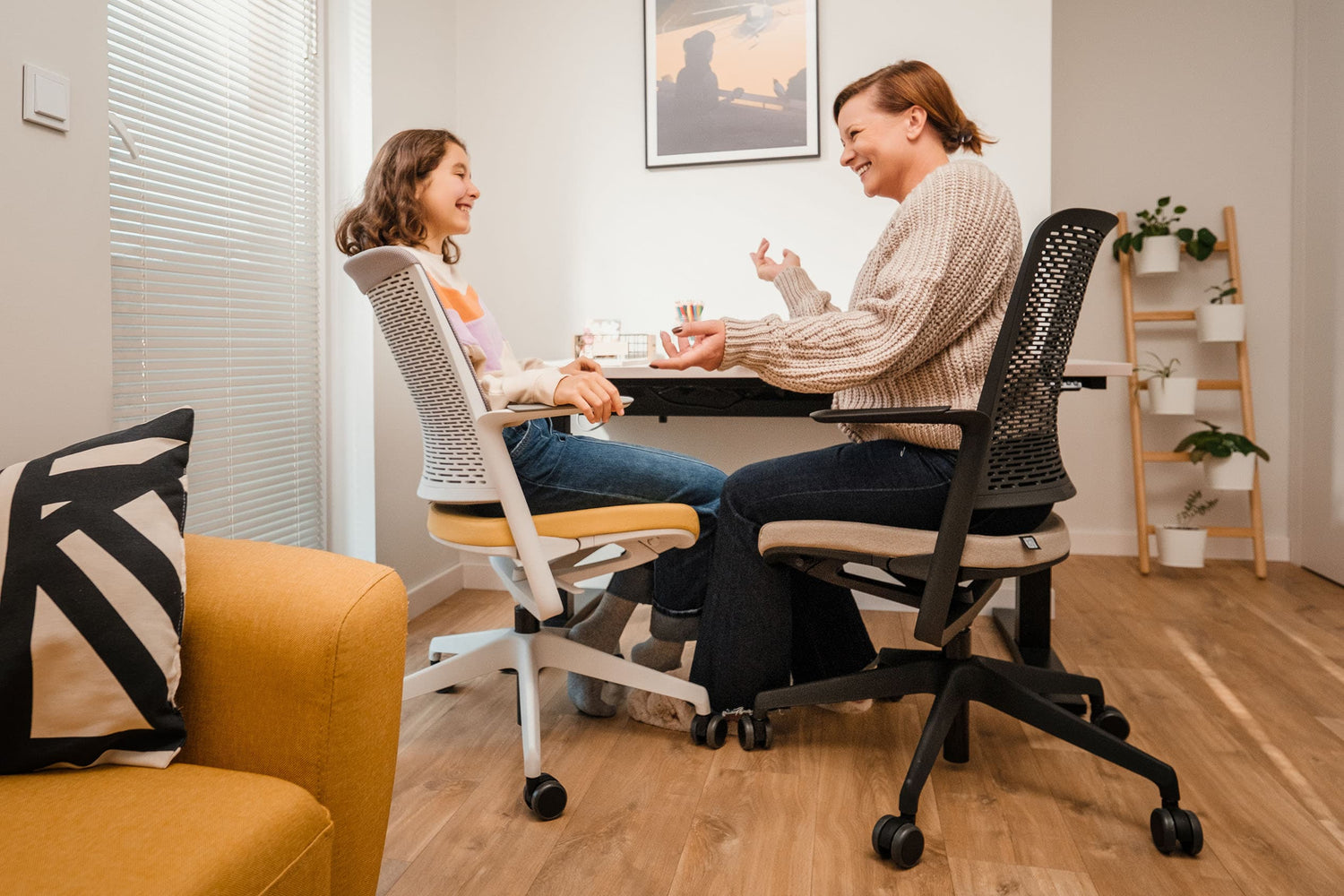
Why is the right sitting posture so important?
We all know it: after a while while sitting it becomes uncomfortable and the back answers. In the long run, this can also be harmful to health. On the other hand, on a correctly set office chair, you can easily and healthy sit comfortably and healthy over a longer period of time. keyword ergonomics And so. Unfortunately, in customer discussions we always find that many office chairs are unpacked directly and used immediately. The many cogs and levers are not observed by the buyer. Therefore, we have made it our task to put together a simple and clear guide that shows you how you can set your office chair individually. Let's go!
Step-by-step instructions: Set your office chair in 6 steps
1. Set the chair height
A false seat height is a common error and can quickly lead to physical complaints. If you are too high, you can get hip problems due to the wrong angle. On the other hand, if you are too low, your arms cannot lie - neck pain is the result. Set your chair so that your feet can stand flat on the floor without hovering in the air- there should be a right angle between the upper and lower leg.
2. Set the depth of the seat
A good one ergonomic office chair offers an adaptable seat depth. Make sure that at least 3-4 fingers fit between the knee and the front edge of the seat to avoid pressure on the knees. A sloping front edge of the seat also prevents increased blood pressure in the veins.
3. position lordosis support
The correct setting of the lordosis support, which fits into the natural curvature of your spine, is also important. Position the height so that your 5 lumbar vertebrae are supported. The lumbar vertebrae are the lowest part of your back, right above the crossbone. The lordosis support should not press on the belt or buttons, which is why a soft material is advantageous.
4. Applicant pressure of the backrest
Good dub -mechanics is the heart of a good office chair. This ensures that the backrest follows your natural forward and backward movements and thus offers you an optimal hold. You should not find the backrest in principle - unless you want to lean back for a short time to relax. If you have an office chair with automatic synchronous mechanics, you do not have to make any further settings. With manually adjustable synchronous mechanics, on the other hand, you can adapt the contact pressure entirely to your needs. This is how you find the ideal contact pressure: Lean back and lift both legs. The backrest should neither press you forward nor drop it backwards.
5. Set armrests
Well -set armrests relieve both your upper spine, your neck and shoulders. Choose the height so that your shoulders are pressed up as little as possible. If the armrests are too high, the muscles behind the shoulder blades are tense up and tensed. On the other hand, if the armrests are too low, the neck tense. The result is the result of the neck and headaches. In contrast, a change in the armrest position can cause miracles. The best are so-called 3D armrests, which can be adjusted in height, width and length. 4D armrests can even rotate laterally.
6. Headrest - if available
A headrest at the office chair is not a must, but offers additional hold and comfort, especially after long work periods while sitting. This is how you relax: go back completely with your torso, put the backrest rigid and put your head on the headrest. Although contact with the headrest is rare during the work, it offers important relief for the cervical spine and thus the back.
Office chair set ✓ Tips for the right sitting position
Have you read here and set your office chair? Congratulations, then you have created the best conditions for healthy sitting! So that you now use your chair optimally, here again summarized ours Tips for a good seating position:
- Use the entire seat of the chair
- Find firm hold on the floor with your feet: a height adjustable desk Or a foot shelf can help find the perfect position
- Your back should lie to the backrest when sitting
- High and lower legs form a right angle
- Lay your forearms loosely on the armrest so that the armrest and table top form a unit
- Also upper and forearms form a right angle
- Tilt your head slightly down for a straight neck
- Tilt your pelvis a little forward
- Pay attention to dynamic sitting
If you take these tips to heart, you prevent a whole range of health problems connected with long sitting: back pain, neck pain, tension, fatigue ...
In addition to an optimally furnished office chair, your desk also plays an important role. Do you already know what you have in the Desk height should pay attention?
Height -adjustable desks
Teldra 2.0, 2-engine desk
1200 - 2000 mm, electrically height adjustable, white
TELDRA 2.0, 2-motor desk
1600 - 2000 mm, electrically height adjustable, real wood veneer oak
LORNA 2-motor desk
1200 - 1800 mm, electrically height adjustable, pearl gray




TELDRA PRO, 3-motor angle desk table
1800 x 1600 mm, electrically height adjustable, white
Station desk
1150 x 590 mm, electrically height adjustable, inductive charger, glass table plate, white
Active desk
Electrically height adjustable, 1800 x 800 mm, white
EASY 2-motor desk
1200 - 1800 mm, electrically height adjustable, white
König + Neurath - Active T motor desk
1600 x 800 mm, electrically height adjustable, electrified, white
Trending magazine articles
-
Product Consultation
Lockers in the office
-
Ergonomie und Gesundheit
Proper seating in the office
-
Produktberatung
Recognize the desk quality














